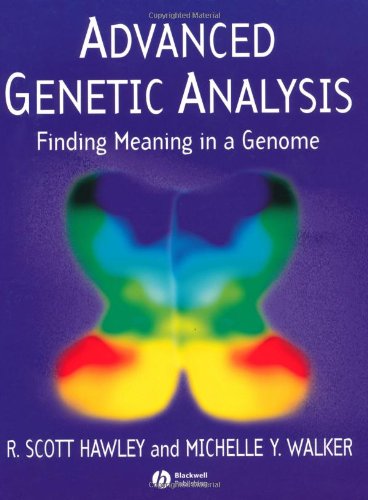Advanced Genetic Analysis: Finding Meaning in a Genome pdf download
Par mark kyle le jeudi, novembre 5 2015, 21:16 - Lien permanent
Advanced Genetic Analysis: Finding Meaning in a Genome. R. Scott Hawley, Michelle Y. Walker

Advanced.Genetic.Analysis.Finding.Meaning.in.a.Genome.pdf
ISBN: 1405123923,9781405123921 | 256 pages | 7 Mb

Advanced Genetic Analysis: Finding Meaning in a Genome R. Scott Hawley, Michelle Y. Walker
Publisher:
Fact sheet on the history and mission of the National Human Genome Research Institute. �We as a That means that few changes in proteins have taken place in the past few hundred thousand years of human evolution. In addition, we identified 439 Recent gene duplicates are highly sequence-similar and are expected to be embedded within segmentally duplicated regions of the genome (defined as DNA segments greater than 1 kb showing >90% sequence identity [4]). The discovery comes as a big surprise to researchers who have been searching for genetic evidence of human-Neandertal interbreeding for years and finding none. In a comprehensive analysis of this revised genome sequence, we are now able to define 20,210 protein-coding genes, over a thousand more than predicted in the human genome (19,042 genes). About 1 percent Earlier analyses that looked at only a small part of the genome had contradicted the notion that humans and Neandertals intermixed (SN Online: 8/7/08). We will find a way to harness the information we are discovering through our analyses of cancer genomes. In February 2001, the consortium published this sequence and an initial analysis of the human genome that reported a number of discoveries. A new high-coverage DNA sequencing method reconstructs the full genome of Denisovans--relatives to both Neandertals and humans--from genetic fragments in a single finger bone. The Human Genome Project's most startling finding was that human genes, as currently defined, make up less than 2 percent of all the DNA on the genome, and that the total number of genes is relatively small. We will learn that cancer under the microscope is different than cancer defined by its genetics. The most surprising of these was that humans have A researcher can then refer to the working draft of the human genome to find the genes in those regions and narrow his or her search for the disease-causing alterations.